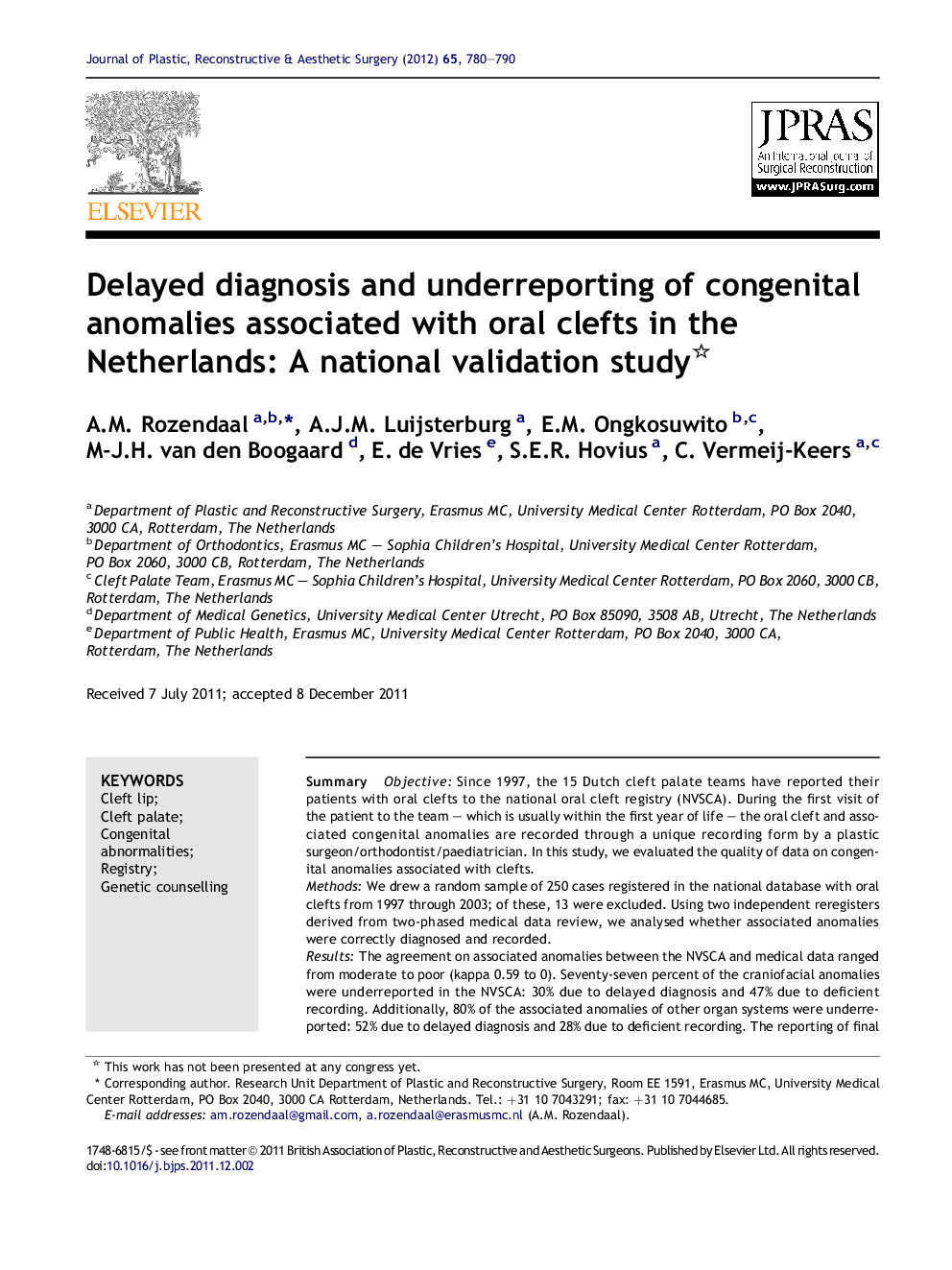| Article ID | Journal | Published Year | Pages | File Type |
|---|---|---|---|---|
| 4118455 | Journal of Plastic, Reconstructive & Aesthetic Surgery | 2012 | 11 Pages |
SummaryObjectiveSince 1997, the 15 Dutch cleft palate teams have reported their patients with oral clefts to the national oral cleft registry (NVSCA). During the first visit of the patient to the team – which is usually within the first year of life – the oral cleft and associated congenital anomalies are recorded through a unique recording form by a plastic surgeon/orthodontist/paediatrician. In this study, we evaluated the quality of data on congenital anomalies associated with clefts.MethodsWe drew a random sample of 250 cases registered in the national database with oral clefts from 1997 through 2003; of these, 13 were excluded. Using two independent reregisters derived from two-phased medical data review, we analysed whether associated anomalies were correctly diagnosed and recorded.ResultsThe agreement on associated anomalies between the NVSCA and medical data ranged from moderate to poor (kappa 0.59 to 0). Seventy-seven percent of the craniofacial anomalies were underreported in the NVSCA: 30% due to delayed diagnosis and 47% due to deficient recording. Additionally, 80% of the associated anomalies of other organ systems were underreported: 52% due to delayed diagnosis and 28% due to deficient recording. The reporting of final diagnoses was somewhat better; however, 54% were still underreported (24% delayed diagnosis and 30% deficient recording). The rate of overreporting was 1.6% or lower.ConclusionCongenital anomalies associated with clefts are underreported in the NVSCA because they are under diagnosed and deficiently recorded during the first consultations with the cleft palate teams. Our results emphasise the need for routine and thorough examination of patients with clefts. Team members should be more focussed on co-occurring anomalies, and early genetic counselling seems warranted in most cases. Additionally, our findings underline the need for postnatal follow-up and ongoing registration of associated anomalies; reregistration in the NVSCA at a later age is recommended.
